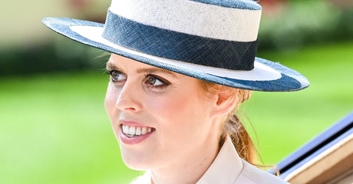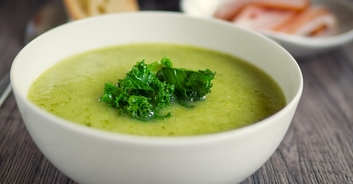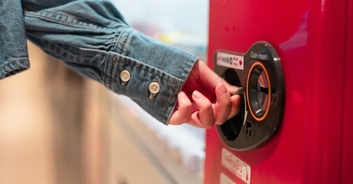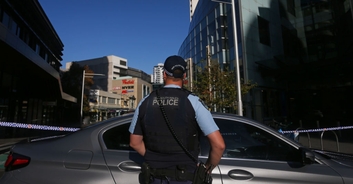The Parkland school shooting has reignited the debate over American gun control and convinced many people, rightly or wrongly, to rail against the right to bear arms. Proponents of the current legislation argue that government restriction of the private procurement of firearms is ultimately unconstitutional and harmful to civil liberties. Pro-gun activists argue that a complete overhaul of current legislation would leave law-abiding citizens unprotected and put illegal guns in the wrong hands - a similar situation to what happened when criminal gangs began producing alcohol en masse during the prohibition era.
However, if you want an example of a school shooting where government intervention actually had a measurable effect on gun-related homicides, then look no further than the little town of Dunblane in Stirlingshire, Scotland. It was here, on 13 March 1996, that a national tragedy shocked legislators into urgent action after 16 children and one teacher were shot dead in their classroom. This tragic incident is still the deadliest mass shooting in British history. So what happened on that fateful day to change British gun laws forever?
The perpetrator was Thomas Watt Hamilton, a former scoutmaster and shop owner, who had been expelled from the scouts after allegations were made against him of inappropriate behaviour towards the minors in his care. It was alleged that, as leader of several youth movements, Hamilton had taken photographs of semi-naked boys without parental consent, and apparently had slept alongside the young men in his van while out hiking with the troop. The Scout County Commissioner was "suspicious of [Hamilton's] moral intentions towards boys" and Hamilton was promptly blacklisted by the Scouts Association.
Whether or not Hamilton was actually guilty of predatory paedophilia is still uncertain. Four separate Scottish police departments investigated 12 complaints against him, but never found any evidence that would stand up to a cross-analysis in court. But what is known is that Hamilton was a misfit and an outcast who had been mocked and excluded his whole life. His scouts laughed at him behind his back, and gave him nicknames like "Mr Creepy" and "Spock". Neighbours living on Kent Road, Stirling, described him as a classic anorak-wearing nerd: quiet and guarded, but outwardly harmless. Little did they know what he was actually capable of after he developed a persecution complex.
Despite having very few friends, Hamilton was able to garner supporters: people who believed, rightly or wrongly, that he had been unjustly labelled as a pervert. Chillingly, many of these people seemed to be pro-gun advocates.
Hamilton managed to win the local government ombudsman for Scotland to his side, as well as gun-club managers, gun-shop owners, police officers whose job it was to approve gun certificates, as well as councillors and parents. He also complained to both the Queen and local MP, Michael Forsyth, without result. By 1996, his incessant rage had boiled over completely.
At 8.15am on Wednesday, March 13, Hamilton was spotted by neighbours scraping ice off his windshield. He then drove five miles north to the town of Dunblane and parked outside of Dunblane Primary School at 9.30am. He used a pair of pliers to sever the wires at a nearby telegraph pole, cutting off the emergency service response time. Hamilton then entered the school gym, to find a class of 28 primary one (first grade) students. He was armed with four handguns: two Browning HP pistols and two Smith and Wesson revolvers, as well as 743 cartridges of ammunition, all of which had been legally acquired through the target shooting clubs he frequented. He opened fire, hitting a total of 32 people over a four-minute period. The majority of the victims were children between the ages of five and six. Only one adult, 45-year-old Gwen Mayor, was killed during the attack. Hamilton then committed suicide at the scene before the emergency services arrived.
The response to the tragedy was an immediate national outpouring of grief. A vigil and prayer session was held at Dunblane Cathedral. The Queen and Princess Anne attended a memorial service at Dunblane Cathedral, and later the families of the victims organised their own memorial service at Dunblane Cathedral, attended by over 600 people. In response to the issue of gun control, a public inquiry, overseen by William Cullen, Baron Cullen of Whitekirk, was launched to find a potential solution. Prior to the publication of the inquiry, an independent report by Stirlingshire council concluded that "the large majority of the law-abiding public are opposed to the possession, ownership or carrying hand guns ... [the] council calls on the Government to bring forward legislation to outlaw the ownership, possession or carrying of hand guns and to introduce salutary prison sentences for any breach."
The inquiry itself noted that: "The fact that Thomas Hamilton was able to retain his firearms and ammunition, along with authorisation to obtain more, raises questions ... as to the system by which firearm certificates are granted, renewed and revoked ... The scale of the massacre and injuries which Thomas Hamilton was able to perpetrate and the speed with which he accomplished his purpose are such as to raise questions of public concern about the firearms which he used." Hamilton could have attacked the children using a shotgun: firearms which were less restricted in the UK than handguns. But the semi-automatic nature of the handguns he used made them more efficient instruments of slaughter.
Colin Campbell (later Senator of Scotland's College of Justice) was a lawyer who represented the families of the dead children. Campbell submitted the proposal that all guns should be banned, and made a number of compelling arguments in favour of this, despite pressure from game shooting enthusiasts and target shooters.Campbell argued that, firstly, by permitting guns to remain legal, lawmakers were more or less accepting that the possibility of another Dunblane massacre occurring was all but inevitable. Not only this, but limited resources and manpower meant that it was more difficult for police forces to restrict and monitor firearms licenses than it was to ban them totally and that the police's duty to protect the public (which included firearms hobbyists) was their most important objective.
Campbell also argued against the consideration that the ownership of firearms was a constitutional right. The Cullen report noted that: "A safety-first philosophy should be adopted and this pointed to radical change. Any decision to continue to permit lawful possession of firearms necessarily implied a willingness to tolerate an increased rate of gun-crime and gun-suicide. It might be thought that the shooting community 'do themselves few favours by their apparent reluctance to countenance any material change.'"
Activist groups formed in the aftermath of the incident, such as the Gun Control Network and the Snowdrop Petition, aimed for the complete ban on private firearms. But it was clear that banning guns wholesale was overkill since lethal weapons are necessary in some situations. For example, rifles and shotguns were (and are) vitally important for conservation, slaughter and pest control, or for the euthanasia of seriously injured livestock. Furthermore, handguns still had to be entrusted to police officers and the military. However, it was decided that using a handgun to carry out civilian tasks was less justifiable, and thus they could be banned.
As the law stood at the time, to acquire his handguns Hamilton had to apply for a firearms certificate from a chief officer of police. Hamilton had to show that he was of sound mind and wanted to use the weapon responsibly, and obviously, he managed to argue his case well. Furthermore, there was nothing in Hamilton's criminal record to show that he should have been exempted from acquiring a lethal weapon, since the accusations against him were ultimately unsubstantiated. The Cullen report concluded that the current system of applications for certificates should be upheld, and continue to be the purview of the police, but that more rigorous standards were required.
As a result of these conclusions, Prime Minister John Major introduced the Firearms Amendment Act 1997, which banned all cartridge ammunition handguns with the exception of .22 calibre single-shot weapons in England, Scotland and Wales. Later on, Tony Blair's labour cabinet banned the remaining .22 cartridge handguns as well, which meant that only antiquated handguns such as muzzle-loading and historic handguns remained legal.
For many Americans, the very idea of this level of firearm restriction is downright unthinkable; but the comments and arguments made by Lord Cullen and Colin Campbell in favour of banning handguns are all the more applicable to assault rifles and semi-automatic rifles. For many gun advocates, the idea of the state banning weapons seems like an arbitrary restriction of their civil liberties, but in the United Kingdom, firearms are treated with much more wariness.
Perhaps my judgement is clouded on this issue. I am sure that many assault rifle owners are responsible, morally upstanding people who handle arms with care. But the town of Dunblane is only a half hour away from my own hometown; in fact, that community bears an uncanny resemblance to my own. At the time I was the same age as the children who were killed, now I am the same age as the survivors. Under different circumstances, had my parents moved a mere 40 miles to the north, I could have been one of the children in that gymnasium on the day of the disaster. It was only bad luck for them and good luck for me that I wasn't in their place, and I can't help but wonder if I'd still have been totally safe growing up if things hadn't changed.










